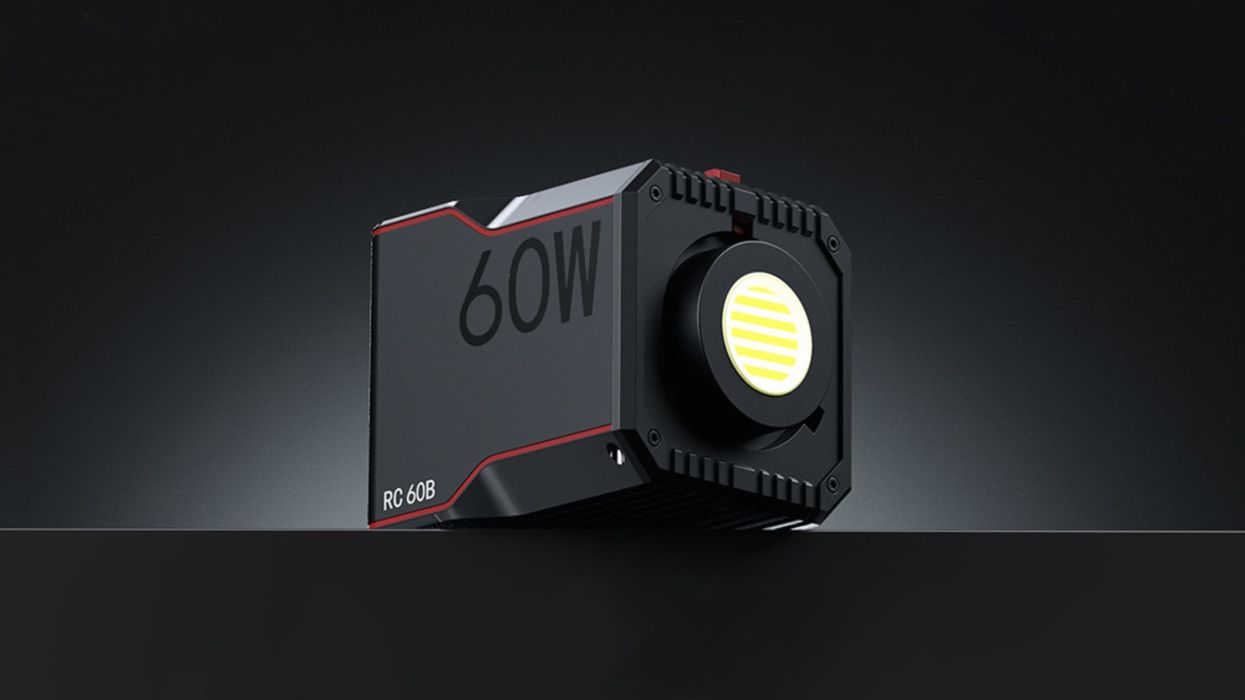The SmallRig RC 60B Simplifies The Monolight Fixture
The camera cage and accessories company continues to offer the lighting world great color accuracy in a small package.

One of my favorite lights in my kit is the Aputure amaran 60D, a small moonolight that offers nice output in a compact package that also lets me utilize my Bowens mount softboxes.
While it won't be a key light for anything other than a close up, it's a nice unit to have when I'm shooting in natural light and need just a little bit of kick to accentuate the light I already have.
Yet these 60W lights end up getting smaller, much like the new SmallRig RC 60B, a bi-color fixture aimed at vloggers, content creators, and videographers.
But will it be enough to replace the unit I already have? Let's find out.
The SmallRig RC 60B
The RC 60B is all about compact portability, making it a perfect choice for small or medium lighting setups. It's powered by an integrated battery with a runtime of 45 minutes at full power, and 75 minutes when in ECO mode. However, you can also power and charge it via a PD USB-C Charger or power bank (up to 100W for full power).
It also has a nice display and set of control knobs that will let me fine tune my settings at a glance.
While it has a fan, SmallRig claim that its intelligent active temperature control will keep the unit running quiet at around 26dB
As for output, the RC 60B offers a CCT range of 2700 to 6500K with a claimed 11,200 Lux at 1 meter when using the included reflector. Without it, output will drop down to 2670 Lux at the same distance. In addition, creative will get a CRI of 97 and TLCI of 98, making it an accurate fixture.
At an overall weight of under 3lbs for the entire kit, you'll barely notice this unit in your bag.

The portability and simplicity is the selling feature here.
SmallRig
Is This Light For You?
Feature wise, the RC 60B is simple, compact, and will keep me portable when I'm on location. The internal battery is a nice touch, but on long shoot days, it won't be enough for my needs.
Furthermore, due to its size, the RC 60B requires a property accessory mount, so all of my Bowens mount accessories won't fit. It's not a dealbreaker for some, but for this already knee deep in the Bowens ecosystem, adapters may be required.
SmallRig RC 60B Bi-Color Monolight
Compactness and portability are at the heart of the SmallRig RC 60B Bi-Color LED Monolight. Suitable for small and medium lighting setups, the RC 60B offers a CCT range of 2700 to 6500K and fast charging/power protocols. Powered by an integrated battery, the unit will give you up to 45 minutes of runtime at full power and 75 minutes in ECO mode.
 Yaroslav Altunin
Yaroslav AltuninFor the price, however, I'm willing to sacrifice wireless connectivity and a Bowens mount to get such a small and battery powered monolight. My Aputure amaran 60D is just too big for some shots.
The RC 60B is also bi-color and really color accurate, at least on paper, and I'm excited to try it out to see if the claims are proven to be true.
- SmallRig Lights Up Sets with the New 120D/B COB Lighting Fixtures ›
- SmallRig Enters the Lighting Game with RGBWW LED Light ›
- Aputure Amaran 200x vs. SmallRig RC 220B—Two Shall Enter, One Shall Win ›
- Three Lighting Manufacturers That Make Killer Monolights ›
- SmallRig’s Latest On-Camera LEDs ›











